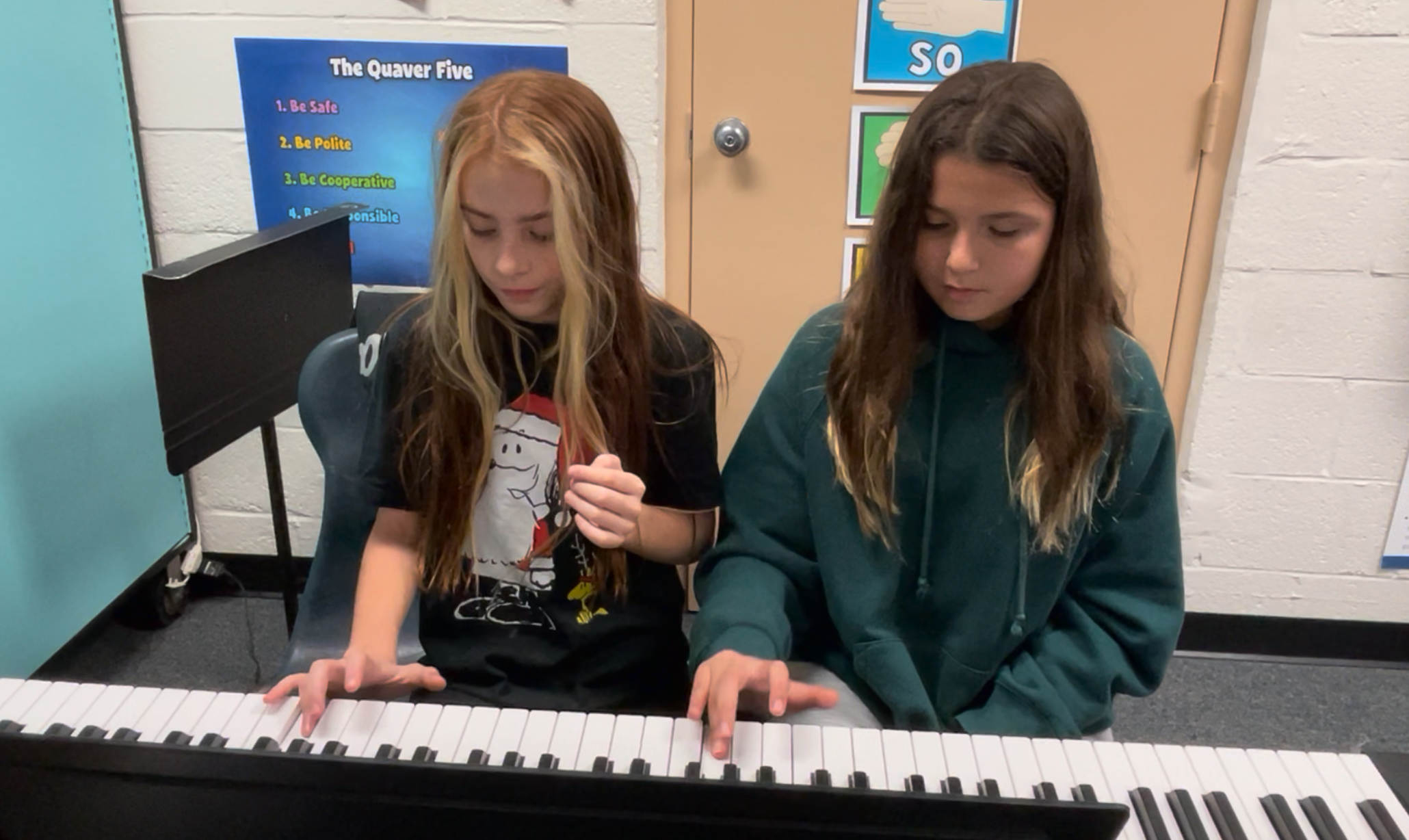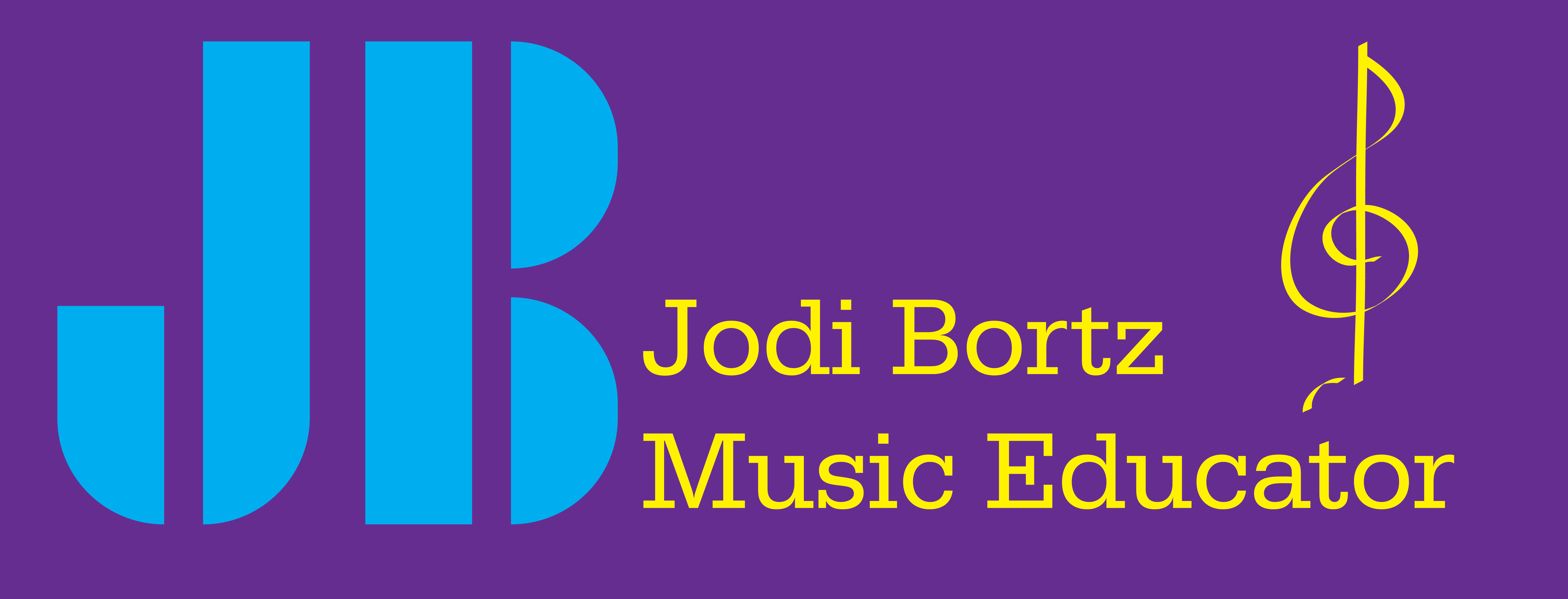Early Childhood & Elementary

I began teaching elementary music at Henry Highland Garnet Elementary school as an emergency hire in September of 2020, when all classes in my district were online only. In January of 2021, I was offered a full time permanent position and received my Maryland Music Educator certification in Fall of 2022.
I teach grades Pre-K through five in general music classes. I also have worked with our onsite Judy Center for Early Learning to provide workshops for toddlers and their families. Most classes come once per week. I am tasked with presenting at least two concerts per year for families and the community. I split my time between Garnet Elementary and Kent County High School.
Highlights of my career at Kent County Public Schools:
- Piloted new digital curriculum that was adopted by the district.
- Started two extracurricular performing groups – Tiger Music Club and Tiger Chorus.
- Worked with Garnet’s Community School coordinator to bring enrichment programming to the local community.
- Worked with the Kent Cultural Alliance “Banjoman Project” to bring high quality workshops and performances to our students.
- Worked with local leaders from Garnet High School to reintroduce traditions and music from when Garnet was a segregated high school.
Early Elementary Teaching Videos
Also Sprach Zarathustra –
Pre-Kindergarten
Movement Activity
Movement is key to how young children experience music. In this activity, students experience the contours of the music through movement.
Dynamic Movement
Pre-Kindergarten
In this example, students are experiencing musical dynamics through movement. They are learning vocabulary such as piano and forte and they are learning to associate small body shapes with quiet sounds and large body shapes with loud sounds.
Blues Lyrics & Improvisation –
3rd Grade
For this assignment, groups of students were given a fill-in-the-blank template for a generic blues lyric. Students were to write their lyrics and create an ostinato to go with it.
This pair asked if they could write original lyrics and music rather than use the template. While the final product doesn’t fit the blues pattern strictly, their performance was moving.
Science of Sound
3rd & 4th Grade
In this unit, which I taught at Garnet and at another local elementary as a stand alone class, students studied aspects of how sound works, the nature of sound waves, and performed sound experiments.
In the first video, students learned about different types of sound making devices. Then they were given access to found objects and had to create a simple musical instrument and describe it.
In the second video, students were experimenting with how changing the volume of water in a glass jar affects pitch.
In the third video, students learned about Kandinsky and synesthesia, which is a condition where a person experiences stimuli through an alternate sense, as Kandinsky experienced sound as colors. In this activity, students had to “perform” a color from the Kandinsy painting behind them as a group.
Case Study – 5tth Grade Music Coding Project
Soundscape Project – 5th Grade
Each year, one of my favorite activities to do with my fifth grade students is a “Soundscape” project. Students create a 3D world with animation and write music and record digital or live music to accompany their creation. This project shows how music can be applied across disciplines and requires imagination, sequential thinking and planning as well as problem solving. The project requires students to include the following:
-
- Create an avatar that represents them in their 3D world.
- Include a 2D or 3D representation of an instrument they play or would like to play.
- Compose an original digital song using Quaver’s creative tools or Chrome Music Lab OR record themselves playing an instrument live.
- Use If/Then coding logic to trigger their avatar to perform the song or start the song in some way.
The only other limitation was students’ imaginations.
The first example is from the first year. The students and I learned a lot during that first year both about what the program can do and about what I can expect from them. I did not encourage as much experimentation with either the recordings or with how they were animated during that first year.
The second example is from the second year of the project. You can see from this example that students were able to do more experimenting with animation and recording. Because I had more time to plan and more experience, I was better able to guide them.
After a year hiatus, we were are once again in 2024 able to offer this project through a grant.
Sample Lesson Plan
I use Trello as my primary tool for lesson planning. This is a free online database tool that allows me to save and sort ideas, modules and resources as cards that can then be organized into lessons. Those plans can then either be used as they are or exported to a PDF for sharing a printed version.
